HOME REMEDIES TO PREVENT VARICOSE VEINS FROM OCCURING
February 8, 2013 by admin
Filed under Tips for Ayurveda
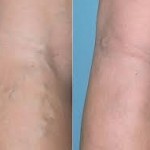 Varicose veins are veins under the skin of the legs, which have become widened, bulging, and twisted. Varicose veins are very common among women and and do not cause medical problems in most people. It is advisable to maintain your body with good exercises to prevent it coming at an young age. In case you are already affected you can manage your health with few simple remedies.
Varicose veins are veins under the skin of the legs, which have become widened, bulging, and twisted. Varicose veins are very common among women and and do not cause medical problems in most people. It is advisable to maintain your body with good exercises to prevent it coming at an young age. In case you are already affected you can manage your health with few simple remedies.
Maintain good hygiene and take care of your feet by regular massage. This will be very helpful in treating varicose veins.
Home remedies for Varicose Veins:
Ayurveda suggests that a well balanced diet is ideal to maintain health and relieve body from stress and constipation.
- Eat a proper diet with plenty of fresh fruits, vegetables, seeds, nuts, whole grains, soya products and fish. Avoid food rich in carbohydrates and fats.
- Eat fibrous food, as this will keep the bowels clean. This will prevent varicose veins from occurring and will also keep you away from various other ailments.
- Fresh fruit juices are very helpful to minimize Varicose veins. Pineapple is also very effective in the treatment of varicose veins. Pineapple juice should be consumed once a day in case there is severe pain and swelling.
- Raw vegetable juices are highly beneficial. A combination of carrot juice and spinach juice is proven home remedy for treating varicose veins. You can have 300 ml of carrot and 200 ml of spinach juice at a time.
- Onion, ginger and garlic are effective for proper blood circulation in the body. Include them while cooking food. It will minimize the pain of varicose vein.
- Supplements of Vitamin E & Vitamin C are found to be favorable home remedies for varicose veins.
- Avoid starchy foods like potatoes.
- Blackberries and cherries are also effective in preventing varicose veins from occurring
Massaging the affected areas:
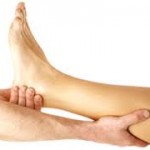 You can apply and massage the affected areas . You will see good improvement.
You can apply and massage the affected areas . You will see good improvement.
- Apply equal quantities of Almond oil and Vitamin E oil onto the affected areas and you will feel the relief from pain and heaviness. You can apply the oil mix daily for good results.
- A good home remedy for varicose veins is applying some apple cider vinegar on skin and around the affected area. This is to be done twice a day.
- Application of Vitamin E oil or comfrey, white oak bark or witch hazel tea. You can apply any one of this on the affected area.
- Fuller’s earth or Multanni mitti is popular for its magical effects on skin. When mixed with water and applied on the varicose veins affected areas as a pack, leave it overnight. You will witness great results.
- Applying castor oil over the swollen veins will reduce the swelling and heal the varicose veins fast.
- Massage the swollen veins with rosemary oil, as this will give relief from the pain.
- The herb called marigold is very good home remedy for varicose veins. A compress of marigold can be applied externally around the affected area. the flowers of this herb can also be tied around the varicose veins. Marigold reduces the swelling and pain.
- An alternate hot and cold bath is ideal. You can keep both the waters and pour alternatively on the affected area. A huge relief from the pain and tiredness.
- Hot Epsom salt bath is recommended. This strengthens your veins and may make them straight.
Exercise is a major remedy for varicose veins.
- Practice yoga daily. Yoga postures are very effective as home remedy for varicose veins as revealed by latest researches. Yoga postures such as gomukhasana, shalabhasana, sirshasana, viparitakarni, padmasana, vajrasana and sarvangasana are very helpful in reducing the pressure on the veins by draining the blood from the legs.
- Legs that are exercised are less likely to have varicose veins because they have good circulation. Perform leg exercises like squats, calf raises and leg lifts every other day.
Watch outs:
- Do not wear skintight pants or bottom wears. This may give pressure to the circulatory system and can create varicose veins.Instead use a stocking set that gives support to feet. You get in different sizes . Contact your nearest pharmacists.
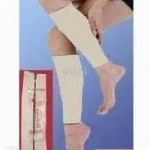
- Be sure to maintain a clean and healthy colon. Never remain constipated. This will minimize the appearance of varicose veins. Lukewarm water enema neutralizes the toxins from the body and colon. This is also useful in treating various disease including varicose veins.
- Varicose veins may turn into the surgical side. If home remedies and internal or external therapy does not work for long time, you need to consult the medical practitioner for further inputs on the problem. If it is left untreated, it may end up in major complications.
- Do not walk hard or run. Keep your legs slightly up when you sleep.
- In case you have to stand for long time while working then balance your weight equally on both the legs. Don’t put extra pressure on one leg.
- Rest is also important part of the day. Take rest whenever possible. Daily sleep of six to seven hours is a must for all of us.
- While watching television or reading books it is a good practice to rest your legs on a stool or chair in elevated position. This will reduce the pressure from your veins and help in treating the symptoms.
- Keep your legs elevated by 6 inches while sleeping.
Take good care of your health and spend time to pamper your skin too.
WHY DOES VARICOSE VEINS OCCUR FOR WOMEN AND THE AGED?
February 8, 2013 by admin
Filed under Tips for Ayurveda
Many of us have heard women complaining of pain in the legs after standing for long durations at functions or gatherings where we are constantly doing one errand or the other and develop severe pain by the end of the day. The pain is due to varicose veins, a common phenomenon for nurses and people with long standing jobs.
What are Varicose veins?
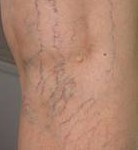 Varicose veins are large, raised, swollen blood vessels that twist and turn. They usually develop in the legs and can be seen through the skin.
Varicose veins are large, raised, swollen blood vessels that twist and turn. They usually develop in the legs and can be seen through the skin.
But Spider veins are smaller, red, purple, and blue vessels that also twist and turn. Spider veins are easily visible through the skin as well. They are also most often seen on the legs and face.
Varicose veins and spider veins often run in families and there may be a hereditary component. Women are more likely to suffer from varicose veins and up to 50% of women may be affected. High chances for people above 50 years to get affected by varicose veins due to weakness in valves of veins.
Causes of Varicose Veins
There are a number of factors that influence a person to varicose veins. These include:
- Prolonged standing – Occupations that involve a lot of standing, such as nurses, hair stylists, teachers, and factory workers.
- Obesity or bloated belly.
- Age – Generally, most elderly individuals show some degree of varicose vein occurrence.
- Hormonal influences during pregnancy, puberty, and menopause.
- Postmenopausal hormonal replacement or HRT (Hormone Replacement Therapy).
- The use of birth control pills.
- Heredity.
- A history of blood clots.
- Conditions that cause increased pressure in the abdomen including tumors, constipation, and externally worn garments.
- Pregnancy is associated with an increase in blood volume. Also, added pressure on the veins in the legs by the weight of the growing uterus and the relaxation effects of the hormones estrogen and progesterone on the vein walls contribute to the development of varicose veins during pregnancy.
- Straining: Chronic constipation, urinary retention from an enlarged prostate, chronic cough, or any other conditions that cause a person to strain for prolonged periods of time causes an increase in the forces transmitted to the leg veins and may result in varicose veins. These mechanisms also contribute to the formation of hemorrhoids, which are varicosities located in the rectal and anal area.
- Prior surgery or trauma to the leg: These conditions interrupt the normal blood flow channels.
- Defective or damaged valves within the veins is the main cause. Valves prevent backward flow of blood within the vein. They keep blood in the vein moving towards the heart. Due to poor functioning of valves the blood flow actually reverses and flows down the superficial veins, when it should be flowing up, towards the heart.
Composition of a Varicose Vein
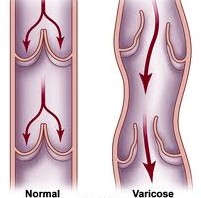 Veins are blood vessels that carry deoxygenated blood to the heart (except for pulmonary veins, which transport oxygenated blood). Varicose veins are the result of a breakdown or faulty design of the valve structure within the veins. Folds in the vein’s inner wall form valves that close temporarily after each heartbeat to prevent the blood from flowing backward until the next pump of the heart moves it on. This assists in returning blood to the heart against the pull of gravity. If these valves become weakened and blood does not flow, blood pools in the area and vein walls can become swollen and inflamed—the condition known as varicose veins.
Veins are blood vessels that carry deoxygenated blood to the heart (except for pulmonary veins, which transport oxygenated blood). Varicose veins are the result of a breakdown or faulty design of the valve structure within the veins. Folds in the vein’s inner wall form valves that close temporarily after each heartbeat to prevent the blood from flowing backward until the next pump of the heart moves it on. This assists in returning blood to the heart against the pull of gravity. If these valves become weakened and blood does not flow, blood pools in the area and vein walls can become swollen and inflamed—the condition known as varicose veins.
Symptoms of Varicose Veins
Individuals experience severe pain, described as an aching or cramping in the legs. Other common symptoms include tiredness, restlessness, burning, inflammation, itchy, or heaviness in the legs.
In women, symptoms may be worse during certain parts of the menstrual cycle or during pregnancy. Patients also may develop swelling, ulcers (deep sores), and an increase in the pigmentation or darkening of the color of their skin, especially in the ankle region.
Occasionally, varicose veins can form a painful blood clot with inflammation of the vein called thrombophlebitis. Rare causes of profuse bleeding from the veins occur due to obstruction of blood flow or superficial injury on the sores in extreme cases.
Preventive measures
It is advised to consult the Medical Practitioner when you feel excess pain and swollen up veins. There are instances where varicose veins spontaneously disappear, but often they do not. Many treatments are available, so check with your doctor. The Doctor will guide you on the tips to prevent re-occurrence of varicose veins. Common preventive measures include:
- Avoid standing in one position for long periods of time. If it is inevitable that you must stand, prop one foot on a stool for 5 minutes, and then switch legs. Stand with knees slightly bent, not locked in position.
- Put your feet up at the end of the day. Pain caused by varicose veins is usually relieved by elevating the legs. You can elevate your legs by placing a stool during seating positions and place an additional thin pillow to raise your feet approximately 6 inches during bed time. With this height you need not fear about gravity, blood flowing towards the head.
- Massage your foot . Pressure from massage facilitates blood away from the feet and legs. Avoid wearing high heeled foot wear as high heels puts additional pressure and minimizes blood flow.
- Keep your weight down. It is more difficult for the heart to pump blood efficiently when you are overweight. Reduce over weight. Do walking daily at least for 30 mins in the morning.
- Minimize salt intake: Sodium, or salt, causes swelling in tissue, which can impede blood flow and put strain on leg veins.
- Avoid alcohol. Alcohol dilates veins, increasing blood flow to feet and legs.
- Quit smoking. It may contribute to high blood pressure, which can aggravate varicosity.
- If you sit for long periods, stand up periodically. The same is true if you stand for long periods, sit periodically. Keep your body constantly changing positions. Keeping one position for long periods is very demanding on a body.
- Wear support stockings. Support hose keeps blood from pooling in feet and legs, and helps the veins return blood back to the heart. These stockings can generally be purchased at any surgical supply store and at some pharmacies.
Simple Exercises to strengthen your legs:
Legs that are exercised are less likely to have varicose veins because they have good circulation. Perform leg exercises every other day. Some examples of leg exercises include:
- Squats: Slowly lower your rear as if you are going to sit down in a chair. Make sure your knees are not over your toes when in squat position. Hold the squat position for three seconds and slowly rise back to standing. Perform this move until you are unable to perform a squat with proper form.
- Calf Raises: With a wall nearby for support, stand with legs straight and slowly raise up onto ball of foot and lower. For greater intensity, perform on stairs, extending heels below stair level for maximum stretch. Do as many as you are able until calves are fatigued. To increase intensity, do calf raises one leg at a time.
- Leg Lifts: Sit on floor with legs straight out in front of body. One leg at a time, raise leg and make small circles with foot and leg, keeping leg straight. Do ten circles in one direction, and ten in the other. Switch legs.
Treatment options
The treatment for varicose veins depends on the diagnosis and the severity of the problem for the patient. In few cases Sclerotherapy, Endovenous Laser Treatment, Radiofrequency Occlusion, Lasers and Intense Pulsed Light and Surgery is recommended.
Surgery is done for individuals with large varicose veins or severe clots. Surgery may be performed using local, spinal, or general anesthesia. Most patients return home the same day as the procedure.
Ayurveda recommends simple home remedies to minimize Varicose veins:
Simple home remedies for you to implement
- Mix fuller’s earth with water to form a thick paste. Apply this as a pack on your legs and let it remain overnight. This reduces the swelling and pain. Wash away with warm water.
- Use the herb called marigold . Marigold flower as a compress can be applied over the painful areas. The flowers can be tied around the areas affected. It reduces swelling and pain.
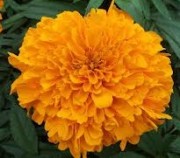
- Mix ten drops of pure essential chamomile oil and four ounces of desired moisturizer cream. Apply this essential oil cream mixture two to three times a day to areas where there are Varicose veins . Chamomile is an anti-inflammatory is used to calm acne, eczema, rashes, dermatitis, dry and itchy skin and other allergic conditions in general.
- Yoga helps reduce the occurrence – Yogaasanas such as the Sarvangaasana, Halaasana, and Pawan muktaasana series promote circulation and the drainage of blood from the legs.
HOW TO PREVENT PIMPLES
February 8, 2013 by admin
Filed under Tips for Ayurveda
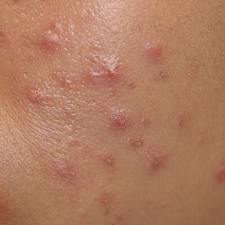 Pimples are considered to be a common problem amongst youngsters, teenagers and even in adults. Although several cosmetic chemical based formulations claim to be effective in treating pimples and acne, resorting to ayurvedic treatment for pimples is the safest. Considering that your skin is already suffering from skin disorders, you might not want to aggravate the problem with the usage of unsafe chemicals.
Pimples are considered to be a common problem amongst youngsters, teenagers and even in adults. Although several cosmetic chemical based formulations claim to be effective in treating pimples and acne, resorting to ayurvedic treatment for pimples is the safest. Considering that your skin is already suffering from skin disorders, you might not want to aggravate the problem with the usage of unsafe chemicals.
Ayurveda treats the entire body and any of its problems using natural remedies. Its holistic approach may make its skin remedies easy and natural alternatives to over-the-counter creams and ointments. Let’s look at some of the ways to use these remedies to get rid of pimples.
These simple home remedies for pimples and acne can work wonders on the skin providing you with a fresh and beautiful skin.
- Rub an ice cube over the affected area for some time. Reduces pimples and also gives a glowy skin. Smoothens skin. Cheapest method and effortless.
- Lime juice improves the texture of skin and lightens the marks.
Note: Lemon juice should not be applied with hands. You should soak cotton balls in lemon juice and apply on the affected area.
- Cucumber juice lessens the pimple marks. They also calms the itching feeling on the skin. Leave the juice on the affected areas for 30 mins such that it will soak as much juice as possible.
- Raw tomato pulp can be used directly rubbed on the pimples . It lessens the marks too. Leave this for an hour. After that wash with warm water and wipe with a soft towel.
- Apply a paste made from one teaspoon of cumin seeds. Remove after one hour
- Crushed basil leaves are effective measure. Apply on affected part and leave it for 30 mins. Wash and dry with soft towel.
- Application of cucumber juice mixed with juices of carrot or lettuce is an excellent home remedy for pimples.
- Apply paste made by mixing together a half teaspoon of ground cinnamon with one tablespoon of honey.. Apply the paste to the areas that need it before you go to bed and then rinse off the dried paste in the mornings. Honey has antibacterial properties and may also speed up healing.
- Mix together one teaspoon of turmeric with mint juice. You should only use enough mint juice to form a paste with a creamy consistency. Apply the paste on the affected areas and leave it on for 30 minutes. Gently clean off the paste using cool water. Turmeric has been used as part of Indian home remedies for acne for some time, and its antiseptic properties may also help to dry out pimples.
All with little patience and effort you can acquire a skin you have hoped for.You deserve the best and to get the best of it you need to strive for it. By donating a little time for yourself you can become beautiful and confident to face the world. Numerous strategies and ayurvedic tips can be followed to get results without investing too much money.
HOW TO REMOVE SUN TAN ON HANDS AND FACE
February 6, 2013 by admin
Filed under Tips for Ayurveda
When you go out for shopping or work in the hot sun, you notice a discoloration in the exposed areas of your hands and face. It is embarrassing at times as you cannot wear a short sleeve dress. You can follow this procedure for removing the sun tan on hands and face.
Step 1:Mix 2 tsp of honey and 2 tsp of lemon juice thoroughly . Apply this mixture onto hands . Leave it for 5 mins. Rinse off with plain water.
Step 2:Then add 1 teaspoon sugar crystals into 3 teaspoons of tomato puree . Mix and apply this on the hands. Use it as a scrubber for 10 mins . It will help exfoliate skin. Rinse off with cold water.
Step 3 :Take 5 teaspoons of papaya pulp and apply it over the hands. Leave this on skin for 15 minutes. Rinse off with cold water.
Step 4: Finally apply a pack made from a mix of besan flour, curd, lemon juice and honey. Retain this till semi dry approximately 15 to 20 mins. Wash your face gently with cold water.
This method is suitable for all types of skins.
Some other simple remedies available in your kitchen are: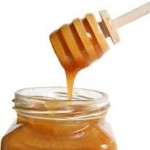
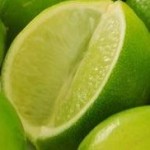
- Mix equal quantities of lime juice and honey and apply gently over your face. After 15 to 20 mins wash your face . You will not believe your own reflection. You are looking much fairer now. This a quick and easy home remedies that can be done at home only. You can do this in a short span of time.
- Apply yogurt onto face and leave for 10 mins. Wash your face and you will feel a soft and supple skin.
For oily skin follow this simple home remedy:
- Mix gram flour or wheat atta with water and rub it all over your face. After 5 to 10 mins wash your face. Your skin will look fairer and you have instantly removed the sun tan.
- Application of rice powder paste is beneficial to remove sun tan. Mix rice powder, along with water and apply on the face. Leave it for 10 mins and wash it off. The results are encouraging.
If time permits i.e on a holiday follow this pack:
- Mix Sandalwood powder, cucumber paste, turmeric powder and lemon juice and apply it. Leave it for 10 to 15 minutes and wash it with cold water. This pack will remove the tan and brighten your face.
Follow these home remedies and take good care of your skin from the external conditions.
Tips for applying and removing a facial mask
- Face mask should be applied after you have washed your face. This will clean clogged pores. If pores are not cleaned periodically on the skin, it will result into a sudden outbreak of acne.
- Wash face pack gently after application . Do not scrub the skin. First use splashes of cold water to moisten a face mask and then gently use your fingers in a circular upward motion to get off the face mask
- General tips to maintain yourself:
- Use sugar and salt to exfoliate your hands and feet. Mix it with olive oil or honey and apply it. Sugar and salt will work wonders, your feet and hands looks and feels good too.
- Lemon juice is good as a nail whitener . Lemon juice also helps remove stains from the hands.
- Push your nail cuticles inside with a cuticle pusher, this gives strength to your nail too.
- Vinegar can be used to have shiny hair. Vinegar rinses your scalp and removes product build up and improves the texture.
IS HERNIA CURABLE WITH AYURVEDIC MEDICINE?
February 4, 2013 by admin
Filed under Tips for Ayurveda
Yes, Hernia can be cured with Ayurvedic medicine. You need to follow the instructions of the Vaidyar mainly on dietary restrictions and exercises to be followed to prevent recurrence. Let us understand about hernia…
What is hernia?
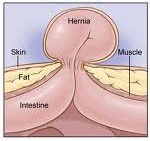 The term hernia means displacement of the internal organ or protrusion or herniation of the viscera. The internal part of stomach pops outward, forming an abnormal swelling. When our stomach muscles get weak, some portions of the intestine swell up by pushing the weak stomach muscle.
The term hernia means displacement of the internal organ or protrusion or herniation of the viscera. The internal part of stomach pops outward, forming an abnormal swelling. When our stomach muscles get weak, some portions of the intestine swell up by pushing the weak stomach muscle.
A hernia may develop in almost any part of the body; however, hernia is most commonly affected in the muscles of the abdominal wall. Hernia affects both genders.
Few individuals observe the protrusion at a young age and will live with it for years. But for few people the hernia is very painful and reduce general mobility. At times the complications increase thereby going in for surgery. Hernias also is hereditary, and can be caused by such things as coughing, straining during elimination, lifting heavy objects, accumulation of fluid in the abdominal cavity, and obesity.
Symptoms of Hernia
Symptoms of hernias vary, depending on the cause and the structures involved. Most begin as small, hardly noticeable breakthroughs. At first, they may be soft lumps under the skin, a little larger than a marble; there usually is no pain. Gradually, the pressure of the internal contents against the weak wall increases, and the size of the lump increases.
In the beginning stages , the hernia may be reducible – the protruding structures can be pushed back gently into their normal places. If those structures, however, cannot be returned to their normal locations through manipulation, the hernia is said to be irreducible, or incarcerated (confined).
Types of hernia:
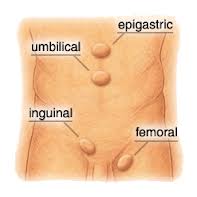 Abdominal wall hernia: Also known as an epigastric or ventral hernia. Common type of hernia among those confirmed.
Abdominal wall hernia: Also known as an epigastric or ventral hernia. Common type of hernia among those confirmed.
Indirect inguinal hernia: Affects men only. A loop of intestine passes down the canal from where a testis descends early in childhood into the scrotum. If neglected, this type of hernia tends to increase progressively in size (a “sliding hernia”) causing the scrotum to expand grossly.
Direct inguinal hernia: The intestinal loop forms a swelling in the inner part of the fold of the groin.
Femoral hernia: Mostly observed in women. An intestinal loop passes down the canal containing the major blood vessels to and from the leg, between the abdomen and the thigh, causing a bulge in the groin and another at the top of the inner thigh.
Umbilical Hernia: An intestinal loop protrudes through a weakness in the abdominal wall at the navel (but remains beneath the skin).
Hiatal hernia: A loop of the stomach when particularly full protrudes upward through the small opening in the diaphragm through which the esophagus passes, thus leaving the abdominal cavity and entering the chest.
Incisional hernia: Hernia that occurs at the site of a surgical incision. Occurs mainly due to strain on the healing tissues due to excessive muscular effort, lifting, coughing, or extreme pressure.
Ayurvedic diet recommended:
- Do not eat too much. Reduce the quantity taken at each meal.
- Eat slowly. Taking frequent small meals instead of three large meals are advised.
- Increase your intake of liquids, but avoid fizzy drinks.
- Taking water with meals, except half an hour before or one hour after a meal is recommended. This helps digestive system to function properly and reduce occurrence of heartburn. It also increases the overall weight in the stomach and slows down the digestive process by diluting the digestive juices.
- Do not eat raw food and avoid over-processed food items like white bread and sugar, cakes and biscuits, rice puddings and overcooked vegetables
- Drinking raw juices extracted from fresh fruits and vegetables, half an hour before each meal, is considered helpful.
- Consume diets consisting of seeds, nuts, whole cereal grains, vegetables and fruits, etc
- Prioritize on having fresh , lightly cooked vegetables and sprouted seeds.
- Carrot juice is considered especially beneficial, as it is rich in vitamin A and calcium and has a restorative effect
- Do not sleep immediately after a heavy meal.
- Take a walk after meals. At least walking 100 steps is advised.
Can a person confirmed with hernia perform exercises?
Yes , a person confirmed for the presence of hernia can perform exercises. Most intense exercises which jerk or put pressure on the muscles are not favorable for hernia. Yoga is the ideal hernia exercise system as it is gentle and gradually stretches the muscles.
Hernia exercises done with acute awareness in harmony with breath and hand support for the affected muscle strengthens the area with improved blood circulation and oxygenation. Yoga provides natural long term relief for hernia by preventing recurrence.
Treatment of Hernia
For small, non-strangulated and non-incarcerated hernias, various supports and trusses may offer temporary, symptomatic relief. However, the best treatment is herniorrhaphy (surgical closure or repair of the muscle wall through which the hernia protrudes).
When the weakened area is very large, some strong synthetic material may be sewn over the defect to reinforce the weak area. Post-operative care involves protecting the patient from respiratory infections that might cause coughing or sneezing, which would strain the suture line. Recovery is usually quick and complete.
Note: In case person undergoes surgery then he should not lift weights, perform heavy tasks, avoid climbing heights, if possible stairs too for a few weeks.
There is a traditional Indian deep-massage techniques on Marma points on the neck to tone up the muscles and relieve the pressure on the hernia area. Based on the symptoms you need to visit the medical practitioner and decide about the remedial actions.
QUICK AND EASY NATURAL HOMEMADE BEAUTY FACE MASK
February 2, 2013 by admin
Filed under Tips for Ayurveda
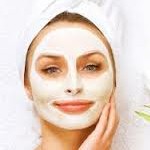 Face packs done at home makes your skin look young, it is very economical too. Skin treatment products are available abundantly in the market, they are expensive too. Every one cannot afford expensive creams and lotions to moisturize and do skin care. However it is important to take good care of your skin. As it is popularly said that face is the mirror of our feelings and expresses our emotions too. Taking care of the face, eyes, lips , nose becomes extremely important.
Face packs done at home makes your skin look young, it is very economical too. Skin treatment products are available abundantly in the market, they are expensive too. Every one cannot afford expensive creams and lotions to moisturize and do skin care. However it is important to take good care of your skin. As it is popularly said that face is the mirror of our feelings and expresses our emotions too. Taking care of the face, eyes, lips , nose becomes extremely important.
Lime or Lemon is a common ingredient used in several homemade face masks due to its natural skin whitening property. Face masks, facial masks, and body masks made from ingredients available at home save a lot of money. You can ascertain benefits of facial masks only after some time.
Do a test prior to know if it suits your skin . Apply a little on the inner side of the wrist. If you feel itchy or redness of skin appears then do not apply on skin and neck.
You should follow a mild massage prior to application of face masks. It helps exfoliation of dead skin cells.
Caution for Dry Skin: – Always wash your face with lukewarm water; do not wash with hot or cold water. While making face packs do not add water as an ingredient, you can add rosewater instead of water. Do not use soap to clean the mask.
Caution for Oily Skin: – Wash your Face with lukewarm water and then with cold water. While washing with lukewarm pores on your skin open’s and you can wash off the oil present in the pores. After that you need to close the pores, so that dust does not move inside, for that wash your face with cold water. Do not use soap to clean the mask.
How can you do this. Follow the quick and easy natural home made beauty face packs as per your type of skin .Some of the popular face masks with fruits and veggies are:
Papaya Egg mask
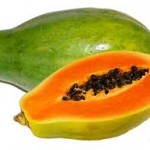 Papaya Egg face mask will brighten the skin complexion and cure tan.
Papaya Egg face mask will brighten the skin complexion and cure tan.
Ingredients used:
- ½ cup blended papaya ( skin firming, anti aging and helps skin tone)
- 1 egg white (smooth complexion, tightens skin, high protein content)
- 5 teaspoons yogurt ( helps moisturize, fight acne, prevent premature aging )
- 1 teaspoon honey (anti-oxidant, anti-bacterial property)
- 2 teaspoons lime juice (improves complexion, helps skin whitening)
Preparation of Papaya Egg face mask:
Blend all the ingredients in a mixer to form a thick fine paste. It will be foamy and smell unpleasant due to presence of egg white . Transfer into a plastic bowl. Apply the pack gently over moist face. Retain it for 15 minutes.
Rinse it off with lukewarm water. Recommended once a fortnight.
The lime rind can be applied over the nails. Very good on dark neck too.
Tomato mask
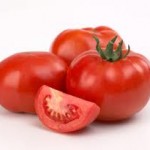 The benefits of tomato face pack is for individuals exposed to sunlight daily. Tomatoes absorbs oil from your skin and moisturizes skin , gram flour exfoliates your skin making it glowing with radiance.
The benefits of tomato face pack is for individuals exposed to sunlight daily. Tomatoes absorbs oil from your skin and moisturizes skin , gram flour exfoliates your skin making it glowing with radiance.
Ingredients used:
- 2 medium sized tomatoes (improves complexion, anti-oxidant, wrinkle free effect, helps skin whitening)
- Besan / gram flour (deep cleanse, exfoliate the skin )
- 1 lime (improves complexion, helps skin whitening)
Preparation of tomato face mask:
Cut tomato, add lime juice and blend it in a mixer to a thick puree . Transfer the puree into a plastic bowl. To this add gram flour to maintain thick consistency. Apply the paste all around your face and let it remain for 10 to 15 mins.
Wash the face pack gently with cold water . This pack can be applied daily .
Cucumber mask
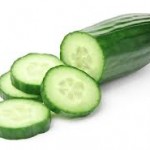 Cucumber pack is ideal for normal skin and oily skin. Cucumber pack is quick and easy to make and therefore very popular among women across the globe. This pack is highly beneficial for the individuals who have dark circles and blemishes.
Cucumber pack is ideal for normal skin and oily skin. Cucumber pack is quick and easy to make and therefore very popular among women across the globe. This pack is highly beneficial for the individuals who have dark circles and blemishes.
Ingredients used:
- 1 cucumber (moisturizes skin, cooling effect )
- 1 teaspoon honey (anti-oxidant, anti-bacterial property)
Preparation of cucumber face mask:
Peel the cucumber , cut into small pieces and blend it in a mixer. Transfer the cucumber puree into a plastic bowl. To this add honey and mix thoroughly to form a fine paste. Place the plastic bowl into the refrigerator for about 30 to 45 minutes . Apply the cool pack on your face and let it remain for 10 to 12 minutes.
Wash the face with cold water and gently pat with a soft towel. Can be done twice a week. Cucumber pack absorbs impurities from skin, rejuvenates skin and prevents discoloration and skin darkening due to sun rays.
Note: To minimize dark circles below eyes , place used tea bags on the closed eyes . You can also dip thick cotton pads in tea and place it on the eyes. Leave it for 15 to 20 minutes. This posture also relaxes your body. Keep thinking positive and keep your mind away from stress.
Banana yogurt mask
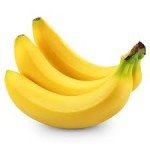 Banana yogurt mask makes your skin feel young and lively.
Banana yogurt mask makes your skin feel young and lively.
Ingredients used:
- 1/3 banana (anti-bacterial property, cures acne and warts)
- ½ cup yogurt ( helps moisturize, fight acne, prevent premature aging )
- 1 teaspoon honey (anti-oxidant, anti-bacterial property)
Preparation of Banana Yogurt face mask:
Mash banana in a mixer along with yogurt and honey. Transfer this to a plastic bowl. Mix and apply gently over moist face and neck. Leave it for 15 to 20 minutes.
Wash off the mask with cold water. Wipe with soft towel and you will be amazed with the result. Your face will be radiating with the fresh glow. Your skin will feel soft. Can be done twice a week.
Mashed banana mixed with yogurt or honey is ideal for hair. Relieves dryness, dandruff and makes hair shiny and smooth.
Apple face mask
 Ingredients used:
Ingredients used:
- 1 apple (skin tone, relieves sunburn, anti-bacterial property )
- 1 egg yolk (anti-aging, prevents acne formation, natural moisturizer)
- 3 teaspoons milk ( improves skin complexion, prevents sun burn)
Preparation of Apple face mask:
Peel the apple and blend in a mixer . To this add egg yolk and milk and blend again. Transfer this to a plastic bowl. Apply the mask gently over your face and neck in circular motions. Leave it for 8 to 10 minutes. This mask gives a unpleasant smell due to the presence of egg. But not to worry the results are excellent. Wash the face pack gently with lukewarm water. Remember to use some room fragrance to remove bad smell from the rooms.
You can grab any of the above ingredients from the kitchen and make your day. There is no wastage and the masks are very easy to make and economical too.
6 POPULAR HOMEMADE BEAUTY FACE MASK
February 2, 2013 by admin
Filed under Tips for Ayurveda
 Natural homemade face masks can do wonders to your skin. The new look achieved makes you look attractive and you are confident to face the world. There are no side effects. Very beneficial for women who are working as the face masks done at home saves time. You can apply the face masks and continue domestic work . You can avoid visit to parlor or spa during time constraints.
Natural homemade face masks can do wonders to your skin. The new look achieved makes you look attractive and you are confident to face the world. There are no side effects. Very beneficial for women who are working as the face masks done at home saves time. You can apply the face masks and continue domestic work . You can avoid visit to parlor or spa during time constraints.
Skin tone varies for each individual and therefore you can test try and finalize the mask that suits your skin. Face masks used regularly improves skin condition. The face masks made of fruits and natural resources are healthy as they have vitamins and minerals that are beneficial for healthy glowing skin.
You need to be sure the face masks suits your skin. Apply a little on the inner side of the wrist. If you feel itchy or redness of skin appears then do not apply on skin and neck.
You can do a mild massage prior to application of face masks. It helps exfoliation of dead skin cells.
Some of the popular natural homemade face masks with basic ingredients available in your kitchen are:
Red Sandalwood Face Mask
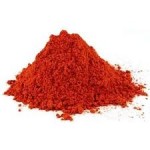 Red sandalwood powder is an excellent remedy to remove mild scars and marks and give even skin tone. Red sandal wood face mask makes you beautiful and fair.
Red sandalwood powder is an excellent remedy to remove mild scars and marks and give even skin tone. Red sandal wood face mask makes you beautiful and fair.
Ingredients used:
- ½ teaspoon Red sandal wood powder ( removes marks and gives good skin tone)
- 2 teaspoons Green gram flour ( natural scrub, supports as a base)
- ½ teaspoon Neem powder ( natural anti- fungal property)
- 1 teaspoon Fresh milk ( adds nourishment to skin)
- ½ teaspoon Honey ( helps skin tightening thus reducing appearance of mild wrinkles)
Preparation of Red sandalwood face mask:
In a plastic bowl take all ingredients and mix thoroughly into a fine paste. The pack is ready. An alternate to neem powder will be neem leaves paste (grind leaves into a smooth paste with little water) .
Wash your face and apply this pack on face and neck. If your skin type is dry then apply a little almond oil on face prior to applying this mask. This mask should be retained for 25 to 40 minutes. Then wash it off with cold water.
You can apply the Red sandalwood face mask atleast once a week. Your skin will be glowing and look clear as the sessions go by.
Note: You can mix sandalwood powder and rose water to a fine thick paste and apply over your face. Leave it for 15 to 20 minutes. Gives a radiant glowing skin.
Turmeric face pack
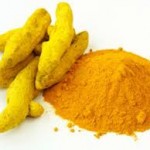 Ingredients used:
Ingredients used:
- 2 teaspoons Turmeric powder (anti-bacterial property, anti septic property and anti aging property)
- 3 teaspoons Besan / chick pea flour (deep cleanse, exfoliate the skin )
- teaspoon Almond oil ( penetrates into skin and makes skin moist)
- 4 teaspoons Fresh milk ( adds nourishment to skin)
- teaspoons Honey ( anti-aging property, absorbs and retains moisture, anti-bacterial property)
Preparation of Turmeric face mask:
In a plastic bowl take all ingredients and mix thoroughly into a thick fine paste. Wash your face and apply this pack on face and neck. This mask should be retained for 10 to 15 minutes. Then wash it off.
You can apply turmeric pack twice a week. Your skin will be glowing . After the facial mask your skin will become soft, smooth and radiant.
Note: You can apply turmeric pack made with turmeric powder, milk and honey on legs and hands. It minimizes facial hair and skin becomes soft and radiant.
Yogurt Honey mask
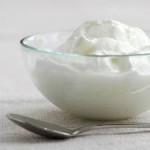 Ingredients used:
Ingredients used:
- 2 teaspoons yogurt /curd (helps moisturize, fight acne, prevent premature aging, relieve sunburn and reduce discoloration)
- 2 teaspoons honey (anti-oxidant, anti-bacterial property)
Preparation of Yogurt honey face mask:
In a plastic bowl take yogurt and honey. Mix thoroughly into a fine paste. Wash your face and apply this pack onto a clean moist face and neck. Yogurt honey face mask should be retained for 10 to 15 minutes. Then wash it off.
You can apply yogurt honey mask twice a week. Your skin will be glowing and clear of skin problems . Benefits of yogurt is it moisturizes, penetrates, hydrates the skin , and lo…you have a soft and supple skin.
Oat meal mask
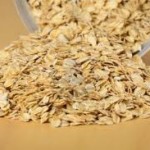 Ingredients used:
Ingredients used:
- ¼ cup oatmeal ( dead skin exfoliation, skin cleanser)
- 5 teaspoons of blended papaya ( skin firming, anti aging and helps skin tone)
- 2 teaspoons honey (anti-oxidant, anti-bacterial property)
Preparation of oat meal face mask:
In a plastic bowl mix oatmeal, blended papaya and honey to a thick paste. Apply the pack gently over face. Retain it for 10 minutes.
Rinse it off with lukewarm water. Your skin will feel soft and smooth. Oatmeal is good if added into water used for bathing too. Recommended once a week.
Multanni mitti mask
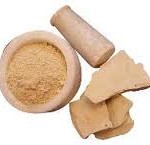 Ingredients used:
Ingredients used:
- 2 teaspoons multanni mitti / Fuller’s earth (it cleans pores, minimizes blemishes of acne and pimples)
- 2 teaspoons sandal wood powder ( removes marks and gives good skin tone)
- 2 teaspoons rose water
Preparation of Multanni mitti face mask:
In a plastic bowl mix multanni mitti ,sandalwood powder and rosewater into a fine paste. Apply it gently over your face. Leave it for 15 to 20 minutes. Wash the face pack gently with cold water Multanni mitti face mask is excellent for an oily skin because it removes the excess oil from your skin and it tightens the pores as well. To be done twice a week.
Besan flour mask
Ingredients used:
- ½ cup Besan flour (deep cleanse, exfoliate the skin )
- 5 teaspoons yogurt ( helps moisturize, fight acne)
Preparation of Besan flour face mask:
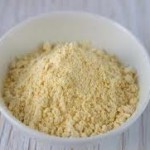 In a plastic bowl mix besan flour and yogurt into a fine thick paste. To maintain consistency add milk (optional) . Apply it gently over your face and neck, ensure moist skin. Leave it for 10 to 15 minutes. Wash off the mask with cold water.
In a plastic bowl mix besan flour and yogurt into a fine thick paste. To maintain consistency add milk (optional) . Apply it gently over your face and neck, ensure moist skin. Leave it for 10 to 15 minutes. Wash off the mask with cold water.
Besan flour mask is ideal for the skin which has a bad acne condition, cleanses pores thereby preventing black head formation and outbreak of acne. Can be done twice a week.
Follow the routine and enjoy owning a good glowing face.
NATURAL WAY TO CURE CANCER – GRAVIOLA FRUIT
February 1, 2013 by admin
Filed under Tips for Ayurveda
Graviola fruit is also known as Soursop or Guanabana. The evergreen tree is native to tropical regions of the world. The fruit is prickly green and is enriched to kill cancer up to 10,000 times more effectively than strong chemotherapy drugs, all without the nasty side effects and without harming healthy cells.
Scientific Name of graviola is Anona Muricata Linn. The white pulp of the fruit is eaten when ripe, can be consumed in the form of juices too. The ripened fruit pulp is used for making desserts, when combined with sugar adds taste. Unripe fruit is cooked along with meat.
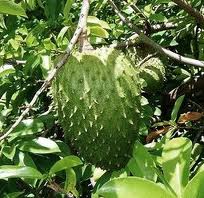 Graviola is prominently known for being a cancer remedy in the following ways:
Graviola is prominently known for being a cancer remedy in the following ways:
- Attack cancer safely and effectively with an all-natural therapy that does not cause extreme nausea, weight loss and hair loss
- Protect your immune system and avoid deadly infections
- Feel stronger and healthier throughout the course of the treatment
- Boost your energy and improve your outlook on life
- Effectively target and kill malignant cells in 12 types of cancer, including colon, breast, prostate, lung and pancreatic cancer.
The biggest advantage is that unlike chemotherapy, the compound extracted from the Graviola tree selectively hunts down and kills only cancer cells. It does not harm healthy cells!
The other health benefits of the fruit are :
- broad spectrum antimicrobial agent for both bacterial and fungal infections,
- Graviola is an anthelmintic . It is effective against internal parasites and worms,
- lowers high blood pressure
- used for depression, stress and nervous disorders.
- Used as an astringent. Reduces bleeding from minor abrasions and cuts.
Soursop or Graviola fruit is packed with vitamins and other healthy ingredients. These include:
- Vitamin C
- Vitamin B 1
- Vitamin B12
- Calcium
- Iron
- Healthy fats
- Protein
- Healthy carbohydrates
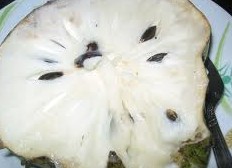 In addition, soursop fruit is cholesterol free and low in calories, making it an ideal snack or flavorful addition to a dessert.
In addition, soursop fruit is cholesterol free and low in calories, making it an ideal snack or flavorful addition to a dessert.
Caution: Restrict the quantity of fruit intake as large quantities may cause indigestion.
The entire tree is having medicinal properties. There are no scientific evidence to support the claim. Some of the traditional treatments of graviola fruit and tree that has been in use for centuries are:
- Graviola root bark is used to treat poisoning.
- Graviola leaves are made into a poultice (paste)and used for treating skin disorders.
- Graviola fruit pulp is applied directly on wounds to help speed up healing. It soothes inflammation and swelling too.
- Graviola fruit seeds are used to treat vomiting.
- Graviola leaf tea or decoction applied topically is used to get rid of head lice and bed bugs.
- The tea made out of graviola leaf is helpful for individuals suffering with insomnia (sleeplessness ), diarrhea and in cases where grown up kids have bed wetting problem.
Note: One leaf is sufficient to make a cup of decoction as it makes it adequately strong. The duration you retain the leaves in the tea also increases strength.
Lots of research is in progress by renowned pharmaceuticals. The benefits of the graviola tree and fruit may become a be a great replacement for medicine in future.







